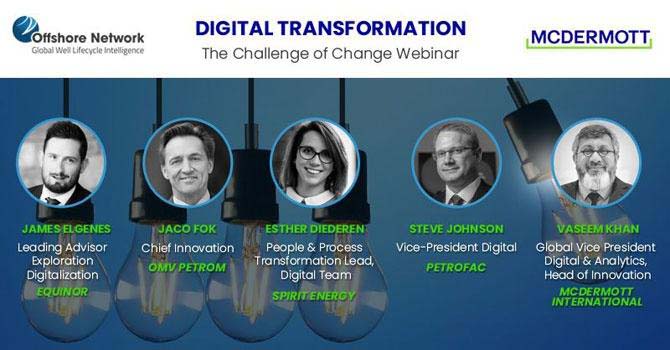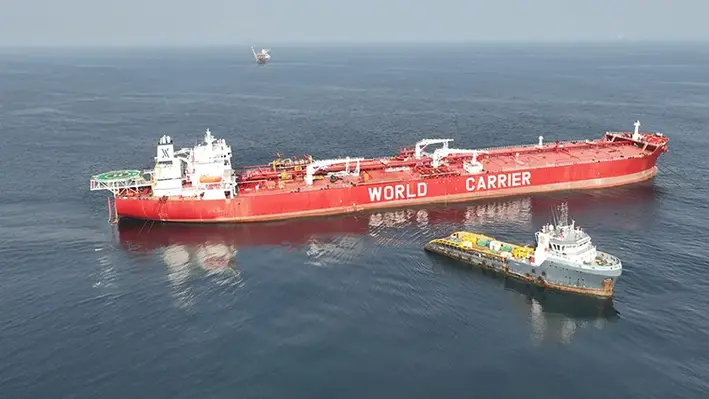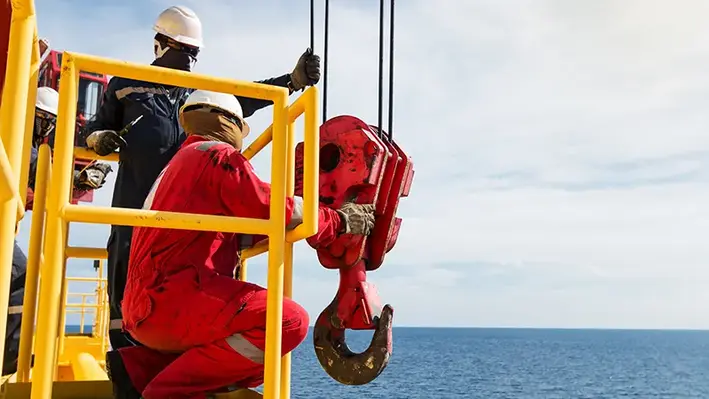The chicken or the egg? Which comes first in the path to digitalisation; people, technology or process?

Vaseem Khan, Global Vice President of Digital & Analytics and Head of Innovation at McDermott International, hosted the webinar entitled ‘Digital Transformation: The Challenge of Change’ as panellists discussed the most appropriate path for digitalisation within the energy sector.
Khan began by outlining that over the past two decades digitalisation has grown in every facet of life. From retail, telecommunications, manufacturing, etc, every industry is embracing the digital revolution and yet the energy sector is holding back. The host sought to explore this issue, and draw from the expertise and experience of his fellow panellists to help businesses undertake their own digitalisation journey.
Esther Diederen, People and Process Transformation Team Lead at Spirit Energy, pointed at the importance of people and processes that, in many ways, supersedes the technology. The Spirit Energy representative commented, “You need a lot more than just having technology, you need people onside and correct processes in place. Without optimising processes you are not going to get value from the technology. The most important thing is you have to get people who want to use the technology; you need to train them, have them understand why they are using it, and make them see the benefit. Just putting technology out there and thinking the world is going to change is not going to work.”
In agreement with this, Jaco Fok, Chief of Innovation at OMV Petrom, stated, “To me it starts with the people. 70% of digital success is the people. In our case we installed a refinery dashboard which was well set up, but only a handful of people could actually use it. There was a whole data warehouse with valuable data barely used.” Fok continued to outline his company’s approach to digitalisation where employees were given the tools for their own installation and education in new technology, with supporting networks. After undertaking this, they now have hundreds of people able to consume data made available by new technology. But Fok warned that the process was difficult, and he was taken aback by the amount of people who had dropped out of the course.
“It is easy to spend a lot of money [on technology] without defining what the value is,” commented Steve Johnson, Digital Vice-President at Petrofac. “You need to take people on the journey. Ask yourself; transformation for what aim? Where are you going? From Petrofac’s perspective, transformation has several different dynamics. We could transform to go into a different market, enhance services or drive down costs. Make sure your starting point is clear about the transformation goals, it provides the ability to bring everything together with a clear target and common objectives. What’s been most successful for us is we had a clear process from corporate right through to individual service lines.”
James Elgenes, Leading Advisor for Exploration and Digitalisation at Equinor, noted, “Now more than ever digital technology is the catalyst for change, and this is only partly about technology. It is about the people and the culture. Too often there is a focus on the technology side and communications, with flash products like virtual reality and drones, but that is a tiny part of what digitalisation is all about.”
Advising on how to start the digitalisation programme Elgenes stated, “You need to start small and gain momentum. Show concrete examples and quick wins and then scale the project to incentivise people more and more. We are starting to see bottom line value in the industry but to get more we need cultural momentum, high energy, enthusiasm and excitement. We want to be a part of this.”
Concluding the session, Kham summarised, “People. Collaboration. Processes. Technology. I don’t think there is an alternative to digitalisation and the industry is moving in that direction. Collaboration is the key; we mustn’t build islands of digitalisation but all of us - owners, operators and service providers - need to work together to deliver. The challenge is that we need to go into this with eyes wide open.”




